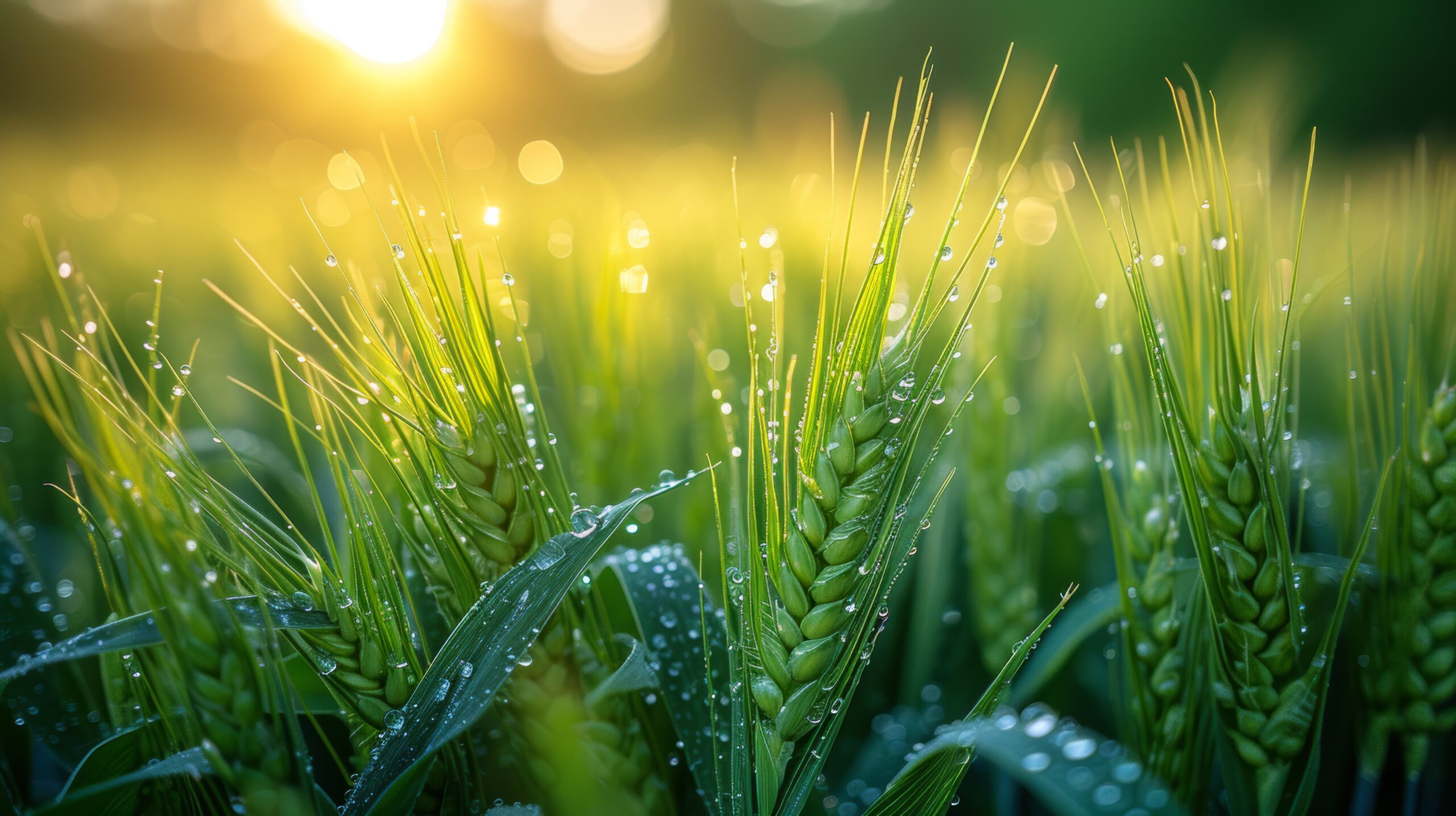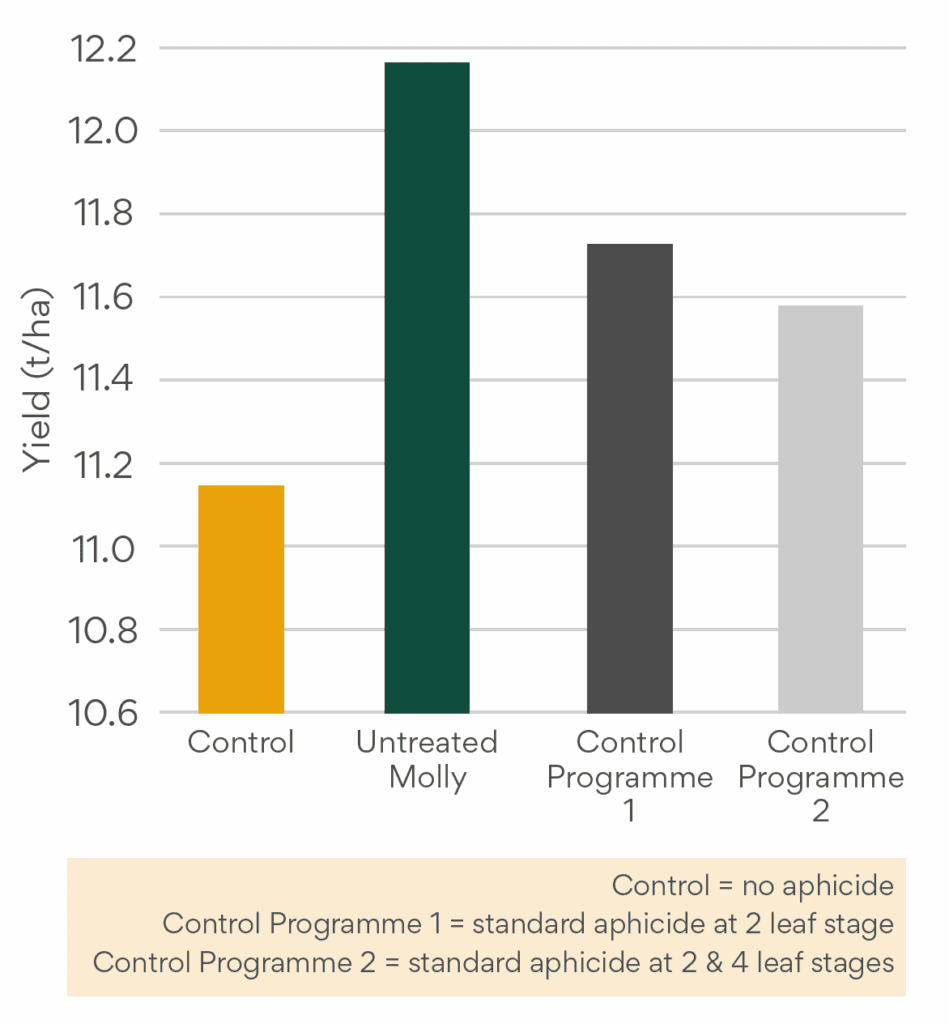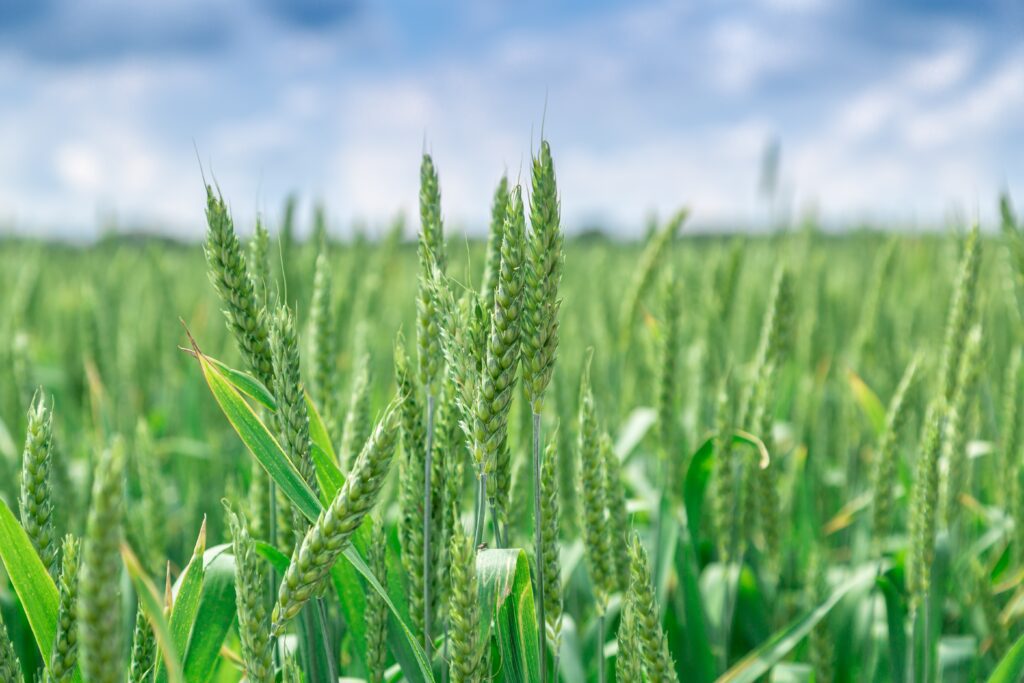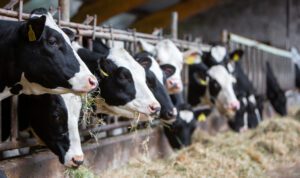Cover Crops
There are numerous soil, crop, and environmental advantages to including cover crops into your cropping rotation. In addition to decreasing nutrient losses, soil erosion and soil compaction, cover crops offer a chance to enhance soil structure and crop diversity. After cereal crops are harvested, it’s critical to plant crops quickly in order to maximise the crop’s benefits for soil and carbon capture.

Runoff which can rise on bare soils without a cover crop is the main way that phosphorus is lost throughout the winter. Where erosion or sediment loss takes place, phosphorus which is often firmly affixed to the soil particles, will be lost. Because cover crops create a green canopy over the soil and the root mass’s ability to tie the soil together stabilises it from erosion, cover crops lower the chance of erosion after intense or prolonged rainfall. On tillage areas without green cover, sediment and Phosphorus loss are highly common and have a detrimental impact on the quality of the water and soil health.
Nitrogen that was left over from the previous crop is recovered by the extensive root system that the cover crop creates as it takes root in the soil. It is recommended to plant a cover crop with a wide and deep root system because without green cover, nitrogen can be lost from the soil to ground water or streams throughout the winter, resulting in poor water quality. Over the winter, the cover crop stores the nitrogen it extracts from the soil in its aboveground biomass, which is then reincorporated into the soil in the spring. Over time, the nitrogen that the cover crop recovers will gradually become accessible to the tillage crops that follow, adding to the soil’s organic nitrogen pool.
Soil layers are broken up by the cover crop’s increased root volume and penetration through the soil. This is a source of organic matter and enhances soil structure, which increases soil stability and drainage. Additionally, the cover crop produces exudates that support soil biology. Compounds produced by soil biology aid in organizing the sand, silt, and clay particles in the soil into water-stable packets that maintain their structure when wet.
The loss of soil organic matter is a significant environmental risk to tillage land production. The primary source of plant nutrients particularly soil N, in the soil is organic matter. Organic matter acts as a shock absorber between the soil’s particles (clay, silt, and sand). Organic matter also aids in lowering soil compaction. In general increasing soil organic matter has several advantages for crops, soil, and the environment.
Because of the increased organic matter over time, which improves soil structure and nutrient availability, productivity will rise in a tillage system. More earthworms, biodiversity and enhanced biological activity result from the additional carbon provided by more organic matter feeding soil biology. It is crucial to keep in mind that cover crops are a component of a tillage system that is implemented over many years, with the advantages accruing over the course of a farming career rather than in a single year.
Drummonds Cover Crop Range
Drummonds offer a full range of cover crop mixes designed to best meet the needs and the scheme that is relevant. Our carefully formulated blends are selected to enhance soil structure, boost fertility and support sustainable farming. We also provide customised mixes, tailored to suit your farms specific conditions and objectives ensuring the right solution for every system.
Soil Booster Graze: A flexible, fast-growing mix ideal for grazing or green cover. It delivers excellent biomass, improves soil structure, and helps suppress weeds. Ideal for grazing. This mix contains forage rape and leafy turnip.
Soil Booster Non-Brassica: Perfect for avoiding brassica-related pest and disease carryover. This blend focuses on soil conditioning and nitrogen capture, making it a smart option for nitrogen fixing. This mix contains vetch, crimson clover and phacelia.
Potato Power: This mix is designed for over wintering prior to planting a potato crop. This is a perfect soil conditioning mix with biofumigant benefits along with nitrogen fixing benefits. This mix includes oilseed radish, white mustard, crimson clover, vetch and black oats. Along with these ranges of mixes we offer single specie mixes available upon order.
Oilseed Rape
As farmers across Ireland plan their rotations for the year ahead, oilseed rape (OSR) continues to show its value not just as a profitable crop, but also as a key tool for improving soil health, biodiversity and overall farm sustainability.
Oilseed rape area in 2025 was at good levels with 16,000Ha planted. After an early winter barley harvest it is expected that area for 2025 will stay at this or increase further. Oilseed rape breaks the disease and pest cycles common in continuous cereal systems. It’s particularly effective against take-all in wheat and helps reduce grassweed burdens. With harvest typically at the end of July, OSR allows early entry for autumn cereal crops giving flexibility for land prep and cover crops. OSR’s strong taproot penetrates deeper soil layers, improving structure, drainage, and nutrient access. Adding OSR to your rotation helps mitigate risks from cereal price volatility and disease losses.
Genetics in OSR have rapidly improved over recent years with resistance against Turnip yellow virus and pod shatter along with Sclertontia tolerance. Pioneer offers excellent lodging resistance of a score of 9 and stem stiffness of 8. Drummonds is offering two varieties to the market for 2025 and this includes:
PT312: A new hybrid for 2025 containing all the of key traits for maximising yield potential. It has strong vigour in autumn and rapid growth in the spring which is ideal for getting ahead of pests. PT 312 also contains pod shatter resistance, sclerotinia tolerance and turnip yellow virus resistance. It also has a strong resistance against phoma which helps manage work load in the spring time.
PT 315: The first pioneer pod shatter resistance hybrid to be launched in Ireland. PT 315 is the highest yielding variety for 2025. It has excellent ground cover of 70% in autumn reducing pest grazing. PT 315 also contains pod shatter resistance, sclerotinia tolerance and turnip yellow virus resistance. It also has a strong resistance against phoma.
| Traits & Characteristics | Trial Information | Lodging resistance | Stem stiffness | Autumn vigour | Height (cm) | Light leaf spot resistance | Stem canker resistance | Verticillium stem stripe | Earliness of flowering | Earliness of maturity | |
| PT315 | Pod shatter resistance, TuYV, Rlm7 | UK National List Trials 2020-2022 | 9 | 8 | 7 | 169 | 6 | 6 | (-) | 6 | 7 |
| PT312 | Protector Sclerotinia, pod shatter tolerance, TuYV | UK National List Trials 2020-2022 | 9 | 8 | 6 | 165 | 5 | 7 | (-) | 4 | 7 |
Winter Barley
Winter barley, grown across 55,000-70,000 ha annually is a key crop for Irish cereal rotations. The early winter barley harvest offers numerous advantages, including convenience, which aids in spreading the workload during the busy harvest period. This often provides an opportunity to establish subsequent crops in the rotation in a timelier manner. The reliable market for barley straw in Ireland further contributes to the popularity of the crop, offering farmers an additional revenue stream and increasing the overall profitability of the crop.

PT 315: The first pioneer pod shatter resistance hybrid to be launched in Ireland. PT 315 is the highest yielding variety for 2025. It has excellent ground cover of 70% in autumn reducing pest grazing. PT 315 also contains pod shatter resistance, sclerotinia tolerance and turnip yellow virus resistance. It also has a strong resistance against phoma.
Disease management, particularly for Barley Yellow Dwarf Virus (BYDV) and other common diseases, is crucial for maintaining healthy crops and achieving optimal yields. This includes vigilant monitoring and appropriate control measures. In response to these challenges, the Drummonds independent trials underscores the crop’s significance in Irish cereal production. This focus on variety selection and disease management, ensures the provision of winter barley varieties that are best suited to the Irish climate and disease pressures. These trials aim to identify varieties with superior disease tolerance and adaptability to local conditions. In recent years, varieties are coming onto the market containing both resistant and tolerant genetic characteristics to act against the yield reductions caused by BYDV. Molly winter barley from Drummonds has been chosen for its tolerance to BYDV and is proving popular amongst growers after achieving impressive yields in the 2025 harvest.

Molly: An early maturing two-row variety. It has moderately short straw with moderate susceptibility to lodging and straw breakdown. Very good resistance to mildew. Good resistance to brown rust, Rhyncosporium and net blotch. Molly also scored 102 on the relative yield score. Molly is a BYDV tolerant variety which helps gives growers the option of getting drilling earlier helping with spreading the farms work load.
Orcade: A high yielding, moderately early maturing two-row variety. It has short straw and is moderately resistant to lodging and straw breakdown. It has good resistance to mildew, Rhynchosporium and net blotch. It has very good resistance to brown rust. Very large grain size with good grain quality. The breeder has a claim that this variety is tolerant to BYDV. Orcade scored highest on the two row varieties with a score of 103.
Organa: An up and coming variety with excellent overall characteristic. Organa is a BYDV tolerant variety. Organa has scored highest over its last 2 years in trials with a score of 105. Like Molly it scores extremely high on mildew with a score of 8. Organa has good resistance to brown rust along with scoring a 7 on rhyncho. Another strong point for organa is its standing with it scoring 7 for lodging and brackling.
Winter Wheat
As we look ahead to the upcoming sowing season, winter wheat remains one of the most important and dependable crops for Irish tillage farmers. Its adaptability to our temperate climate, strong market demand and potential for high yields make it a cornerstone of profitable arable systems. Whether you’re focused on feed, milling, or seed production, winter wheat offers flexibility, rotational benefits and opportunities for long-term soil health improvement.
A lot was learnt this season from growing wheat when it comes to controlling diseases such as yellow rust. Yellow rust outbreaks have been reported across many winter wheat crops in Ireland, including in varieties previously considered highly resistant.
This breakdown is largely attributed to the failure of the Yr15 resistance gene, which has been widely used in European wheat breeding programs. Many growers were caught off guard, seeing symptoms in varieties rated 7 or 8 for resistance.
Warm, humid spring conditions in March and April accelerated disease pressure, especially in early-sown crops with dense canopies. Rust has spread rapidly in untreated plots, with our Agronomists noting the disease was rampant throughout different parts of the year. While yellow rust is an issue it is manageable with the right treatments at the right time. It is found that by applying a T0 in the Drummonds trials using Super S will give a yield bonus of 0.4T/ha. Treating rust is best done from the base of the plant as it can get out of control very rapidly. Drummonds has a range of varieties available for 2026 along with a number of very promising varieties in the pipe line for 2027.
Spearhead: High-yielding with a score of 108 with early maturity and good mildew resistance. Moderate scores for Septoria and yellow rust mean it suits growers with a strong disease management plan. Spearhead is an excellent option for second year wheat.

Graham: A reliable, early maturing choice with good yield of 102, strong mildew and rust resistance, and solid grain quality. Well suited to Irish conditions but moderate Septoria protection means timely fungicide inputs remain important.
Champion: A very high yielding with a score of 107 moderately early maturing variety. Moderately susceptible to lodging and moderately resistant to straw breakdown. Very good resistance to mildew. Moderately resistant to Septoria tritici and fusarium ear blight. Moderately susceptible to sprouting. Moderate grain quality.

Kubik: Has scored extremely high over the last number of years in trials with a score of 106. Along with this it is one of the highest performing varieties in the north east when It comes to septoria and rust. It is a great variety to include at both early and late drilling slots due to its excellent vigour. Grain quality of Kubik is also one of the highest on the recommended list with a KPH of 79 and score extremely high on overall straw quality.
Bullseye: Sister variety to Kubik, Bullseye has had the highest septoria resistance score in Ireland over the last 3 years with a score of 7 in trials. As a result of this it can be included in the early drilling slot of wheat as it also has excellent autumn vigour. Very much like Kubik, Bullseye has excellent straw and grain quality scoring a 7 on lodging.




